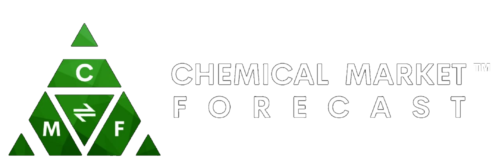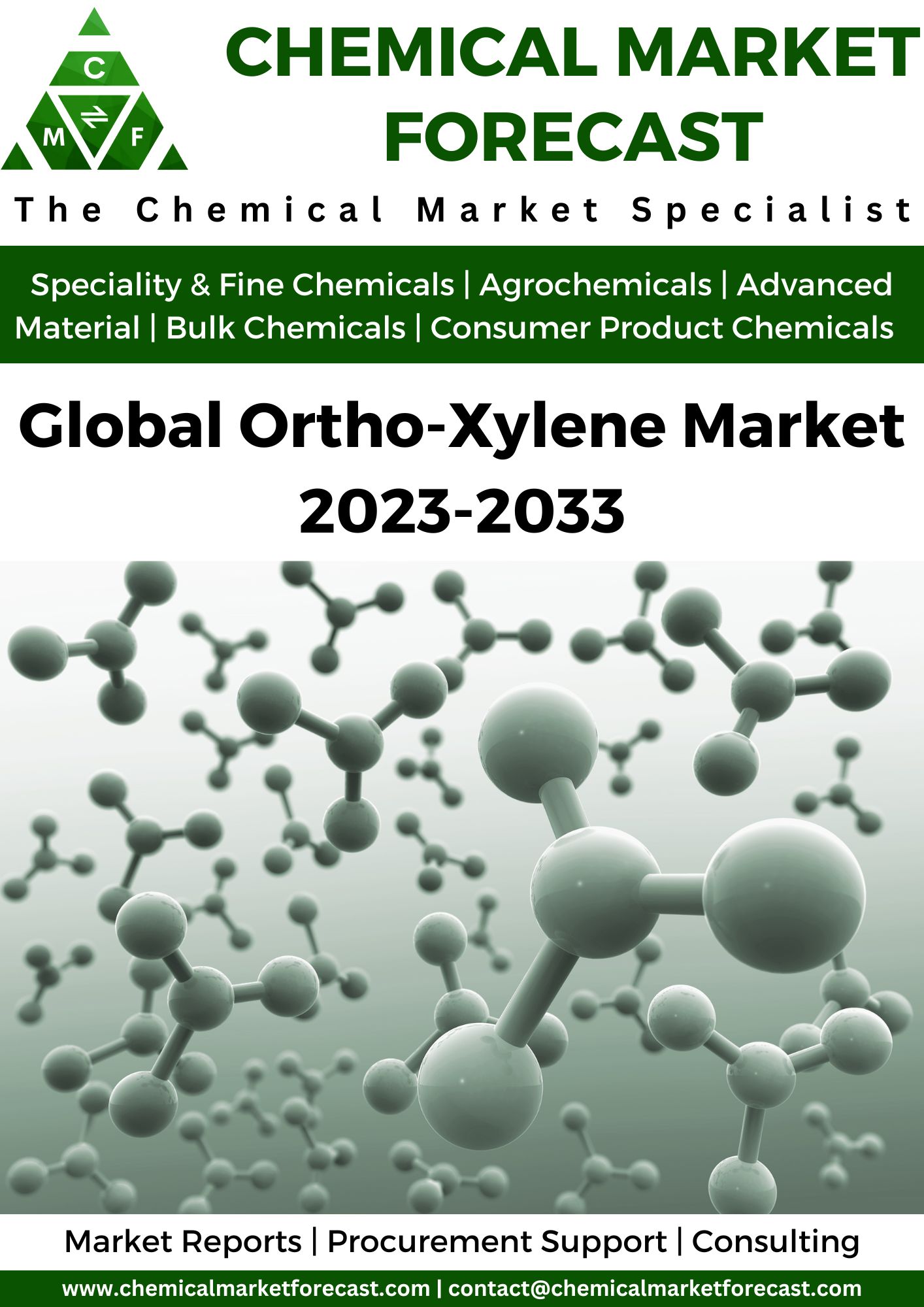Global Ortho-Xylene Market Report
Ortho-xylene, also known as o-xylene, is a colorless liquid hydrocarbon with a sweet odor. It is widely used as a solvent and raw material in the production of chemicals such as phthalic anhydride, terephthalic acid, and other derivatives. The global ortho-xylene market is expected to witness significant growth in the coming years due to increasing demand for ortho-xylene in various end-use industries such as construction, automotive, and electronics.
The major driver of the ortho-xylene market is the increasing demand for phthalic anhydride, which is a derivative of ortho-xylene used in the production of plastics, resins, and coatings. The growth of the construction industry, particularly in emerging economies, is also expected to drive the demand for ortho-xylene as it is used in the production of paints and coatings. Furthermore, the increasing demand for polyethylene terephthalate (PET) resins, which are used in the manufacturing of bottles, packaging materials, and textiles, is expected to drive the demand for terephthalic acid, another derivative of ortho-xylene.
The ortho-xylene market can be segmented based on application and region. Based on application, the market can be segmented into phthalic anhydride, terephthalic acid, and others. Phthalic anhydride is the largest application segment of the ortho-xylene market, accounting for more than 50% of the total demand. Terephthalic acid is also a significant application segment, accounting for around 30% of the total demand.
Based on region, the ortho-xylene market can be segmented into North America, Europe, Asia Pacific, Middle East & Africa, and Latin America. Asia Pacific is the largest market for ortho-xylene, accounting for more than 50% of the global demand. The growth of the construction and automotive industries in China and India is expected to drive the demand for ortho-xylene in the region. North America and Europe are mature markets for ortho-xylene, with steady demand from end-use industries such as paints and coatings, adhesives, and plastics.
The key players in the ortho-xylene market include Chevron Phillips Chemical Company, ExxonMobil Chemical Company, BP plc, Royal Dutch Shell plc, Reliance Industries Limited, DowDuPont Inc., Formosa Chemicals & Fibre Corporation, Lotte Chemical Corporation, and China Petrochemical Corporation (Sinopec). These players are focusing on expanding their production capacities and investing in research and development activities to develop new products and applications for ortho-xylene.
One of the major challenges facing the ortho-xylene market is the increasing environmental regulations regarding the use of hazardous chemicals. Ortho-xylene is classified as a hazardous chemical and is subject to regulations regarding its production, transportation, and storage. These regulations may increase the production costs for ortho-xylene manufacturers and affect their profit margins.
The price of ortho-xylene can be influenced by various factors such as supply and demand, production costs, and market dynamics. The price of ortho-xylene is subject to fluctuations, and it can be affected by changes in these factors. Some of the key factors that can impact the price of ortho-xylene are discussed below: Supply and demand: The supply and demand for ortho-xylene can have a significant impact on its price. If there is a shortage of ortho-xylene in the market due to production issues or disruptions in the supply chain, the price of ortho-xylene can increase. Conversely, if there is an oversupply of ortho-xylene in the market, the price can decrease. Production costs: The production costs of ortho-xylene, which include the cost of raw materials, labor, energy, and transportation, can also impact its price. If the production costs increase, the price of ortho-xylene may also increase to maintain profitability. Market dynamics: The global market for ortho-xylene is highly competitive, and market dynamics such as mergers and acquisitions, product innovation, and pricing strategies can also impact the price of ortho-xylene. For example, if a new supplier enters the market with a lower-priced product, the existing suppliers may have to reduce their prices to remain competitive. Economic factors: Economic factors such as inflation, currency exchange rates, and geopolitical instability can also impact the price of ortho-xylene. For example, if the value of the US dollar decreases, the price of ortho-xylene may increase as it becomes more expensive to import raw materials or export finished products.
Table of Contents
Global Ortho-Xylene Market Report
1 Market Introduction of Ortho-Xylene Market Report
2 Market Segmentation of Ortho-Xylene Market Report
2.1 Ortho-Xylene Market Segmentation By Region
2.2 Ortho-Xylene Market Segmentation By Type
2.3 Ortho-Xylene Market Segmentation By Crop Type
3 Cost Structure of Ortho-Xylene Market Report
4 Country Analysis of Ortho-Xylene Market Report
4.1 China
4.1.1 Ortho-Xylene Market Forecast & Size in China
4.1.2 Ortho-Xylene Market Trends & Analysis in China
4.1.3 Key Ortho-Xylene companies in China
4.1.4 Regulatory Framework of Ortho-Xylene Market in China
4.2 Germany
4.2.1 Ortho-Xylene Market Size in Germany
4.2.2 Ortho-Xylene Market Trends & Analysis in Germany
4.2.3 Key Ortho-Xylene companies in Germany
4.2.4 Regulatory Framework of Ortho-Xylene Market in Germany
4.3 France
4.3.1 Ortho-Xylene Market Size in France
4.3.2 Ortho-Xylene Market Trends & Analysis in France
4.3.3 Key Ortho-Xylene companies in France
4.3.4 Regulatory Framework of Ortho-Xylene Market in France
4.4 Italy
4.4.1 Ortho-Xylene Market Size in Italy
4.4.2 Ortho-Xylene Market Trends & Analysis in Italy
4.4.3 Key Ortho-Xylene companies in Italy
4.4.4 Regulatory Framework of Ortho-Xylene Market in Italy
4.5 Netherland
4.5.1 Ortho-Xylene Market Size in Netherland
4.5.2 Ortho-Xylene Market Trends & Analysis in Netherland
4.5.3 Key Ortho-Xylene companies in Netherland
4.5.4 Regulatory Framework of Ortho-Xylene Market in Netherland
4.6 Russia
4.6.1 Ortho-Xylene Market Size in Russia
4.6.2 Ortho-Xylene Market Trends & Analysis in Russia
4.6.3 Key Ortho-Xylene companies in Russia
4.6.4 Regulatory Framework of Ortho-Xylene Market in Russia
4.7 Canada
4.7.1 Ortho-Xylene Market Size in Canada
4.7.2 Ortho-Xylene Market Trends & Analysis in Canada
4.7.3 Key Ortho-Xylene companies in Canada
4.7.4 Regulatory Framework of Ortho-Xylene Market in Canada
4.8 Mexico
4.8.1 Ortho-Xylene Market Size in Mexico
4.8.2 Ortho-Xylene Market Trends & Analysis in Mexico
4.8.3 Key Ortho-Xylene companies in Mexico
4.8.4 Regulatory Framework of Ortho-Xylene Market in Mexico
4.9 Singapore
4.9.1 Ortho-Xylene Market Size in Singapore
4.9.2 Ortho-Xylene Market Trends & Analysis in Singapore
4.9.3 Key Ortho-Xylene companies in Singapore
4.9.4 Regulatory Framework of Ortho-Xylene Market in Singapore
4.10 United Kingdom
4.10.1 Ortho-Xylene Market Size in United Kingdom
4.10.2 Ortho-Xylene Market Trends & Analysis in United Kingdom
4.10.3 Key Ortho-Xylene companies in United Kingdom
4.10.4 Regulatory Framework of Ortho-Xylene Market in United Kingdom
4.11 Switzerland
4.11.1 Market Size in Switzerland
4.11.2 Market Trends & Analysis in Switzerland
4.11.3 Key Ortho-Xylene companies in Switzerland
4.11.4 Regulatory Framework of Ortho-Xylene Market in Switzerland
4.12 Brazil
4.12.1 Market Size in Brazil
4.12.2 Market Trends & Analysis in Brazil
4.12.3 Key Ortho-Xylene companies in Brazil
4.12.4 Regulatory Framework of Ortho-Xylene Market in Brazil
4.13 USA
4.13.1 Market Size in US
4.13.2 Market Trends & Analysis in US
4.13.3 Key Ortho-Xylene companies in US
4.13.4 Regulatory Framework of Ortho-Xylene Market in US
4.14 Japan
4.14.1 Market Size in Japan
4.14.2 Market Trends & Analysis in Japan
4.14.3 Key Ortho-Xylene companies in Japan
4.14.4 Regulatory Framework of Ortho-Xylene Market in Japan
4.15 South Korea
4.15.1 Market Size in South Korea
4.15.2 Market Trends & Analysis in South Korea
4.15.3 Key Ortho-Xylene companies in South Korea
4.15.4 Regulatory Framework of Ortho-Xylene Market in South Korea
4.16 India
4.16.1 Market Size in India
4.16.2 Market Trends & Analysis in India
4.16.3 Key Ortho-Xylene companies in India
4.16.4 Regulatory Framework of Ortho-Xylene Market in India
4.17 Thailand
4.17.1 Market Size in Thailand
4.17.2 Market Trends & Analysis in Thailand
4.17.3 Key Ortho-Xylene companies in Thailand
4.17.4 Regulatory Framework of Ortho-Xylene Market in Thailand
4.18 Russia
4.18.1 Market Size in Russia
4.18.2 Market Trends & Analysis in Russia
4.18.3 Key Ortho-Xylene companies in Russia
4.18.4 Regulatory Framework of Ortho-Xylene Market in Russia
4.19 Malaysia
4.19.1 Market Size in Malaysia
4.19.2 Market Trends & Analysis in Malaysia
4.19.3 Key Ortho-Xylene companies in Malaysia
4.19.4 Regulatory Framework of Ortho-Xylene Market in Malaysia
4.20 Saudi Arabia
4.20.1 Market Size in Saudi Arabia
4.20.2 Market Trends & Analysis in Saudi Arabia
4.20.3 Key Ortho-Xylene companies in Saudi Arabia
4.20.4 Regulatory Framework of Ortho-Xylene Market in Saudi Arabia
5 Global Ortho-Xylene Market Trends
5.1 Ortho-Xylene Market Trends- Key Drivers
5.2 Ortho-Xylene Market Trends- Key Restraints
5.3 Ortho-Xylene Market Trends- Key Challenges
5.4 Porter’s Five Forces Analysis of Ortho-Xylene Market
5.5 PEST Analysis- Ortho-Xylene Market
6 Global Ortho-Xylene Market Forecast
6.1 Ortho-Xylene Market Forecast By Region
6.1.1 North America
6.1.2 Europe
6.1.3 APAC
6.1.4 Middle East
6.1.5 ROW
6.2 Ortho-Xylene Market Forecast By Type
6.2.1 Fertilizer
6.2.2 Pesticide
6.3 Ortho-Xylene Market Forecast By Crop Type
6.3.1 Fruits & Vegetables
6.3.2 Oilseed and Pulses
6.3.3 Cereals & Grains
6.3.4 Other
7 Supply Chain of the Ortho-Xylene Market Analysis
8 Opportunity Analysis
9 Scenario Analysis
10 Key Company Profiles
11 Strategic Conclusions – Ortho-Xylene Market Report
12 Abbreviations used in Ortho-Xylene Market Report






Reviews
There are no reviews yet.